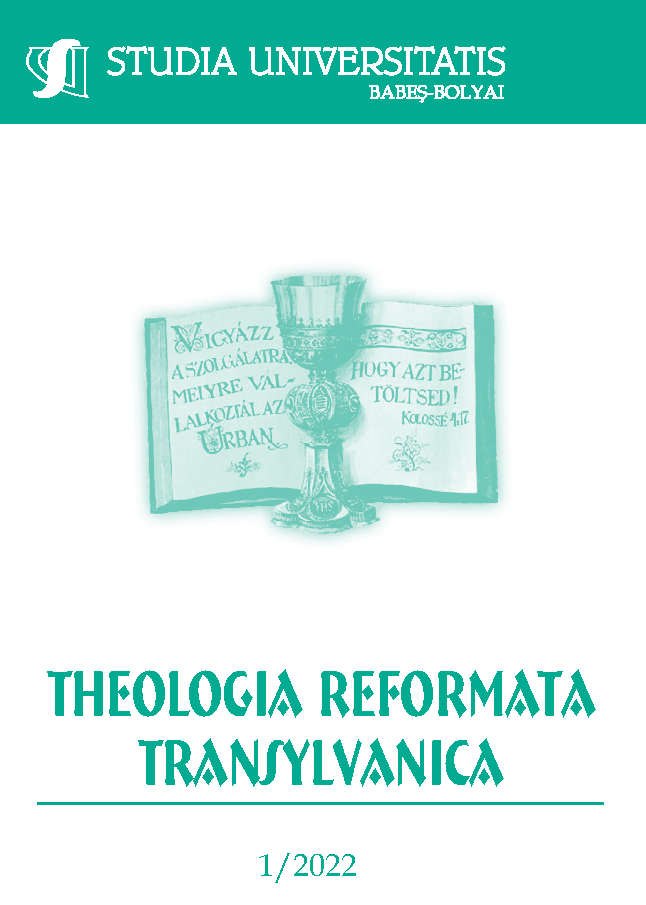Identity, Ethnicity, and Religious Changes in Bihor County, Romania. Reflections on the Changes of Romanian and Hungarian Christian Denominations in Bihor County during the 20ᵗʰ Century. The Case of Érselénd/Șilindru
DOI:
https://doi.org/10.24193/subbtref.67.1.09Keywords:
Greek Catholics, identity change, Ruthenians, minority, religion, ethnicity, PartiumAbstract
The purpose of the research is to offer a three-dimensional examination of a chosen population’s make-up, examining ethnicity, native language, and religious denomination during the 20th century in the Romanian Bihor County. This pa-per examines the changing process of how identity in Érselénd/Șilindru was influenced by outside forces coming from different social, political, religious, and even economic directions. The village was chosen, as it was originally a Ruthenian-speaking Greek Catholic settlement that moved to the Hungarian Kingdom centuries ago. They kept their religious identity but became Hungarian-speaking people. Then, during the twentieth century, this homogenous settlement, due to external political, historical, and economic influences, experienced a profound change to a degree that had not been predicted. However, this frag-mentation into various Christian denominations, the changes of language and ethnic identity clearly demonstrates the complex history of the geopolitical region of Partium, Romania.References
BAKK, Miklós – SÜLI-ZAKAR, István – SZILÁGYI, Ferenc (2020): Partium Borders, Ethnic Groups and Territorial Development. Budapest, Károli University.
BENKŐ, József (1999): Transsilvania specialis: Erdély földje és népe II. Transl. and ed. by: György Szabó. Bucharest–Cluj-Napoca: Kriterion.
BLAZOVICH, László (2005): Az Andreanum és az erdélyi szászok az etnikai autonómiák rendszerében a középkori Magyarországon. In: Erdélyi Múzeum. 67, 3–4. 5–14.
DJUVARA, Neagu (1995): Între Orient și Occident. Țările Române la începutul epocii moderne (Between East and West. The Romanian Principalities at the Beginning of the Modern Era). Bucharest, Editura Humanitas.
DUDÁS, Gyula (2011): A szabad hajdúk története a XVI. és XVII. században. Budapest, Historia Antik könyvház.
FÉNYES, Elek: Magyarország geographiai szótára. https://www.arcanum.com/hu/online-kiadvanyok/ValyiFenyes-orszagleirasok-81A15/fenyes-elek-magyarorszag-geographiai-szotara-84F88/s-8725F/er-selind-8732C/.
GRIGORIAN, Tigran (1993): Istoria și cultura poporului Armean (The History and Culture of the Armenian People). Bucharest, Editura Științifică.
HAULER, Ernst (2004): Die Abgetrenten Sathmarscwaben. Passau, E. Hauler.
HAWKING, Stephen (1998): A Brief History of Time. Bantam, 10th Anniversary Edition.
KOMORÓCZY, Géza (2012): A zsidók története Magyarországon. Vol. I–II. Bratislava, Kalligram.
KOVÁCS, Bálint (2016): Az irodalom és vallás kulturális közvetítő szerepe az erdélyi örmények integrációja során a 18. században. PhD dissertation, Pázmány Péter University.
NAGY, Kornél (2011): The Catholicization of Transylvanian Armenians (1685–1715): Integrative or Disintegrative Model? In: Barszczewska, Agnieszka – Peti, Lehel (eds.): Integrating Minorities: Traditional Communities and Modernization. Cluj-Napoca, ISPMN. 33–56.
NÉMETH, Ádám (2019): Diversity Indices and Their Potential Application in Ethnic Studies. In: Tér és Társadalom. 33, 2. 130–148. https://doi.org/10.17649/TET.33.2.3123.
PIETSCH, Walter (1988): A zsidók bevándorlása Galíciából és a magyarországi zsidóság. In: Valóság. 11, 55. 46–58.
RÁCZ, István (2000): Parasztok, hajdúk, cívisek: társadalomtörténeti tanulmányok. Debrecen, Kossuth Egyetemi Kiadó.
SZILÁGYI, Ferenc (2003): Görög-katolikusok Bihar megyében. In: Süli-Zakar, István (ed.) Társadalomföldrajz-területfejlesztés. Debrecen, Kossuth Egyetemi Kiadó. 69–80. (2004): A Historical and/or a Developmental Region? In: Süli-Zakar, István (ed.): Cross Border Cooperations – Schengen Challenges. Debrecen, Kossuth Egyetemi Kiadó. 139–143. (2005): Bihar megye felekezeti földrajza. Debrecen, Kossuth Egyetemi Kiadó. (2016) : Roma népesség a partiumi határmegyékben (Bihar, Szatmár). In: Szilágyi, Ferenc – Pénzes, János (eds.): Roma népesség Magyarország északkeleti határtérségében. Oradea, Partium. 49–90., 258. (2019): Partium – Reintegráció a magyar–román határvidéken. Budapest, Károli Gáspár Református Egyetem, Állam- és Jogtudományi Kar.
UDVARDI, István (1992): Ruszinok a 18. században. Történelmi és művelődéstörténeti tanulmányok. In: Vasvári Pál Társaság füzetei 9. Nyíregyháza, Bessenyei György Könyvkiadó.
VARGA, E. Árpád: Erdély etnikai és felekezeti statisztikája 1850–2002. http://www.kia.hu/konyvtar/erdely/erd2002/bhfel02.pdf.
*** http://mek.oszk.hu/02100/02115/html/1-113.html.
*** https://www.britannica.com/place/Transylvania (last accessed: 23 April 2021).
*** https://www.britannica.com/place/Transylvania (last accessed: 23 May 2021).
*** https://www.encyclopedia.com/humanities/encyclopedias-almanacs-transcripts-and-maps/transylvanian-ethnic-groups (last accessed: 23 April 2021).
*** https://www.encyclopedia.com/humanities/encyclopedias-almanacs-transcripts-and-maps/transylvanian-ethnic-groups (last accessed: 7 May 2021).
Downloads
Published
How to Cite
Issue
Section
License
Copyright (c) 2022 Studia Universitatis Babeș-Bolyai Theologia Reformata Transylvanica

This work is licensed under a Creative Commons Attribution-NonCommercial-NoDerivatives 4.0 International License.



